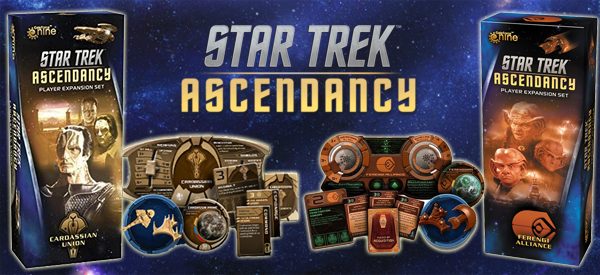
It took forever for me to get a chance to play Star Trek: Ascendancy, thanks in large part to its hard three-player limit. I had a feeling that I would really enjoy the game when I first opened it up and skimmed through the rules. A good Star Trek-themed 4-x game is something that I've been craving since Birth of the Federation on Windows 98. Sure enough, after playing Ascendancy, it immediately became my favorite Star Trek board game on the market. The friends that I've played it with have also all loved it so far.
The base game included an insert advertising the first two expansions: the Cardassians and Ferengi. After the first play-session, I put the two expansions on my wishlist. Each expansion adds an additional faction and support for an additional player (for up to five, if you have the friends and the time). The Borg expansion came out around the same time, and I picked that one up too, as I was curious to see how the NPC Borg faction would play out. We decided to stick with the more basic expansions first though, as the Borg added extra complexity (and difficulty) that we weren't sure we were ready for. So I'll be reviewing the Borg seperately.
Star Trek: Ascendancy came packaged with an insert for the Cardassian and Ferengi expansions.
I had hoped to get a review of the Ferengi, Cardassians, and Borg out last year. And I don't mean like "in December" last year; I mean I had hoped to have this review out last February! Unfortunately, the difficulty inherent in getting four or five people together to play a six-hour board game, combined with packing up the house and moving last summer, meant that I got a couple early games in with the Cardassians, but never got a chance to play as the Ferengi until this winter. I didn't want to write a review of one faction without playing the other, since they are kind of inversions of each other in many ways.
The core game comes packaged with turn order cards for up to ten players, so I initially guessed that meant that Gale Force 9 was anticipating at least seven expansions. The Vulcans and Andorians will be released imminently, and the Borg rules actually allow the Borg to use up two turn order cards, which means there's only one space left to fill! Judging by the cards present in the base game, it looks like the Tholians are set to be the last expansion. If that's the case, this would leave some significant players on the Star Trek galactic stage out in the cold. The Dominion would be the single, most conspicuous absence from the game's roster. I also had hoped to see the Gorn as a faction, and at least one Delta Quadrant faction (such as the Kazon or Hirogen).
Well, I can take a guess what the next (hopefully not last) planned expansions is...
Though, I guess there's nothing stopping Gale Force 9 from releasing more expansion factions than there are turn order cards. I mean, I doubt anybody's going to be playing this game with nine or ten players anyway. Good luck finding a table big enough to even play such a game to begin with! GF9 could also just package an eleventh or twelfth turn order card in any future expansions if they feel it's necessary. So there's no reason why they would be unable to release the Dominion, Gorn, or other factions.
In any case, the first three expansions complete the Birth of the Federation roster of playable Federation, Klingons, Romulans, Ferengi, and Cardassians, as well as an NPC Borg faction.
There's not much in the way of new rules for either of the new factions. Both come with 10 new system discs (including the faction's respective homeworld), all the faction's ships and control nodes, advancement decks, some extra resource nodes and tokens, and ten new exploration cards. Everything slots pretty seamlessly into the core game. The only new mechanics are associated with some of the new exploration cards in the Ferengi expansion, but the card texts are pretty self-explanatory. There's a tiny rules insert anyway, in case you need more clarification.
I was expecting a Dominion expansion, and had hoped for the Gorn and at least one Delta Quadrant faction.
The seamless integration and lack of new rules does not, however, mean that the new factions feel dull or uninteresting. In fact, both the Cardassians and Ferengi have a very distinct (and very fresh) feel of play. Both have very potent unique boons and banes that separate them tremendously from the three factions included in the core set. In general, they both are dependent on using their ships and fleets to fuel their respective economies, which gives their ships uses beyond just exploration, research, and military action. You have to be very deliberate with your ships and fleets, since proper use is essential to keeping your economy running. As such, I don't recommend that a novice player jump into playing as either the Cardassians or Ferengi. You could probably muddle your way along, but it's better to have a firm grasp of the game mechanics (playing as the Klingons or Romulans) before you try your hand at the expansions.
... [More]
8ba34ba0-cafd-4866-80a3-5fab9c90eeb7|0|.0
Tags:Star Trek, Star Trek: Ascendancy, Gale Force Nine, board game, expansion, Cardassian, Ferengi, labor camp, production, occupation, invasion, trade, culture
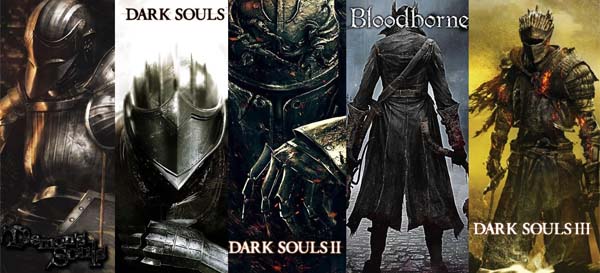

In my recent time playing Dark Souls for On the Branch Gaming, we discussed several ideas for ways that the game could have been improved. I'm not sure if From Soft will be making any more Dark Souls or Bloodborne games (at least not anytime soon), but if they do, here's a list of some things that I'd like to see them improve. At the very least, we can consider this to be a retrospective, "How could they have done it better?" brainstorm, and any other developers who want to try their hand at a Souls-Borne-style game could maybe try these alternative designs out for their games.
This isn't a wishlist of changes that I'd like to see in specific games. I've already done those for each of the Souls games:
Some of these posts (and the ideas presented in them) haven't aged very well, but I do stand by most of the suggestions offered in the above posts. At the very least, they offer perspective on how my own perceptions of the games have evolved over time.
Table of Contents
More informative UI
The UI is something that could definitely use some work. Each game in the series made minor tweaks to the UI - sometimes improving the overall experience, other times seeming to regress to a clunkier interface. But there are some things that probably should have been present, if not in Demon's Souls, then at least by Dark Souls or Dark Souls II. Some of these things seem so obvious that it boggles my brain that nobody at FROMSoft thought of them. Or maybe they were always items near the bottom of the priority list, that the team simply ran out of time to ever implement.
Collection log
Something that persitently bothered me across all the Souls-Borne games was the intrusive item-pickup notification. That giant, black box sitting almost dead in the center of the screen, partially blocking your view of your character and his or her immediate surroundings, did not need to be there. If you pick up an item in the heat of battle, then having to press X to dismiss it could be just enough of a distraction to get you killed.
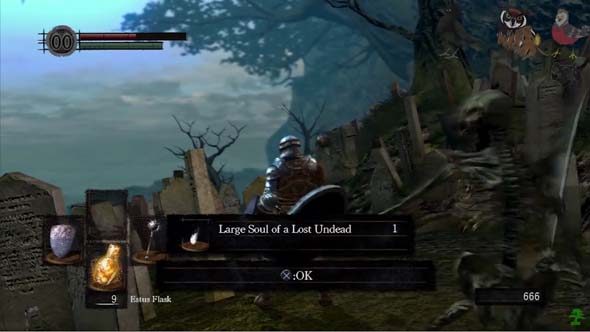
While playing Dark Souls with On the Branch Gaming,
I was reminded how distracting the item-pickup notifications are.
Instead of this big notification box, I propose an alternative: put a smaller notification in the corner of the screen somewhere that vanished after a few seconds. Since we don't want to miss knowing what we just picked up, the game should also include an item-collection log in the menu. Heck, it wouldn't even need to be a separate screen, it could just be a sorting option in the existing menu: sort by recently-acquired... [More]
35c6a454-4e45-4e98-bfc1-0830953cab63|0|.0
Tags:Demon's Souls, Dark Souls, Bloodborne, From Software, On the Branch, Nioh, user interface, tutorial, multiplayer, invasion, PvP

Perhaps I just have a bias against parallel dimensions (as evidenced from my interpretation of Silent Hill's otherworld), but I want to take some time to clear up what might be a mis-conception in the conventional wisdom interpretation behind Dark Souls' multiplayer summoning mechanics. Dark Souls co-op is not necessarily based on parallel dimensions, as many players seem to assume. It might, in fact, be intended to be an abstraction of some kind of time travel. I've noticed that many players online already seem to refer to the multiplayer mechanic of these games in terms of time travel, but I've yet to see any wikis, lore videos, or blogs that seem to explain multiplayer as a time travel mechanic.
I want to preface this analysis by stating that I'm not asserting that the following explanation is the absolute, 100% correct interpretation of the mechanic. Individual players may disagree based on their own reading of the game, and I'm personally somewhat conflicted on the topic myself. I merely want to propose this as a possible alternative to the defacto "parallel worlds" interpretation. I'm going to point out in-game evidence that supports the idea that Dark Souls' multiplayer is based on time travel, but there is also in-game evidence and mechanical evidence that flat-out contradicts that interpretation. I will address those contradictions as well. So that being said, please keep an open mind, and enjoy the read!
The summoning mechanic
There are two games in the series that are not part of the Dark Souls franchise, and which have different in-game explanations and rules for the same multiplayer features (more or less). Those games are, of course, Demon's Souls and Bloodborne. Both have asynchronous multiplayer and summoning mechanics that work similarly to Dark Souls.
Demon's Souls summoning operates under the idea of summoning the spirit of a fellow adventurer who's soul is trapped in the Nexus. This is why you must be in soul form in order to be summoned. Bloodborne's beckoning operates [similarly] under the principle of manifesting hunters out of dreams (which seems to operate under a similar cyclical paradigm to Dark Souls, but I'm not 100% sure). In Dark Souls, you aren't necessarily summoning ghosts (as you do in Demon's Souls), since the undead in Dark Souls are more akin to zombies than ghosts. Also, characters in Dark Souls can leave summon signs whether they are hollowed (dead) or in human form (revived), which is a significant alteration from Demon's Souls. A lore reason for summoning is provided in Dark Souls:
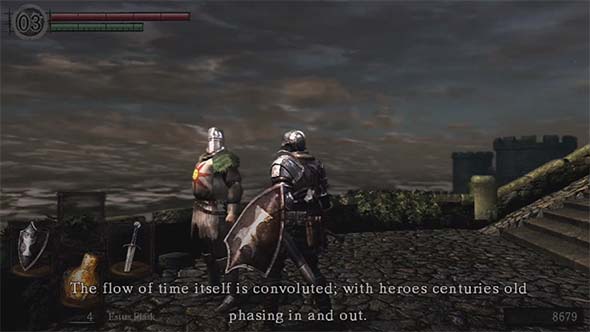
Solaire explains to us how summoning works:
"We are amidst strange beings, in a strange land.
The flow of time itself is convoluted; with heroes centuries old phasing in and out.
The very fabric wavers, and relations shift and obscure.
There's no telling how much longer your world and mine will remain in contact.
But, use this, to summon one another as spirits, cross the gaps between worlds, and engage in jolly co-operation!"
Both Solaire's dialogue, and the White Sign Soapstone (along with other online play items) make references to other "worlds", which leads to many jumping to the conclusion that each player's game is a sort of parallel universe within the Dark Souls lore. However, this may not necessarily be correct. Both Solaire's dialogue and the soapstone also provide explanations for these worlds: "time is convoluted | distorted". This seems to be the explanation for what is meant by "worlds", and it seems that Solaire and the in-game descriptions may be using "time" and "world" interchangeably (could it be a translation / localization issue?). The phrasing in the white soapstone's description joins "the flow of time is distorted", and "the White Soapstone allows undead to assist one another", into a single, compound sentence, which definitely implies that the two phrases (and ideas) are linked.
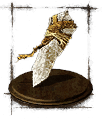
"Online play item. Leave summon sign.
Be summoned to another world as a phantom through your sign, and defeat the area boss to acquire humanity.
In Lordran, the flow of time is distorted, and the White Sign Soapstone allows Undead to assist one another"
The dialogue of Saulden (the Crestfallen Warrior of Dark Souls II) is even more explicit... [More]
b4b5ccdc-fe67-4add-901b-a41077204778|4|5.0
Tags:Dark Souls, Dark Souls II, Dark Souls III, lore, summon, phantom, multiplayer, From Software, time travel, paradox, grandfather paradox, predestination paradox, parallel dimension, soapstone, Solaire, Crestfallen
Warrior, Crestfallen Saulden, Lautrec, Ringfinger Leonard, Anri of Astora, Sirris of the Sunless Realms, Black Iron Tarkus, Iron Golem, Anor Londo, invasion, Demon's Souls, Bloodborne
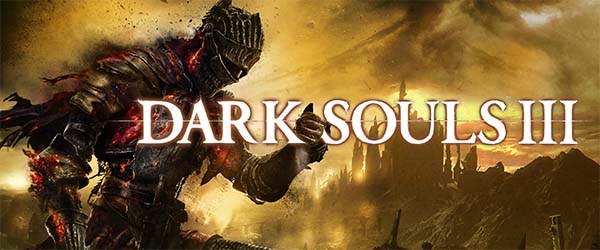
Table of Contents
What the hell does poise do?!!
In my review, I noted that poise seemed to have been turned off in the game's code. Well, FROM Soft has apparently stated that poise is working as intended. Really? How? What does it do? FROM was not forthcoming (so far) with any details on what the stat is supposed to actually do, other than to say that it is "more situational". Ok, whatever. So I guess it's up to the community to try to figure out how this stat apparently works, since it doesn't work in any way comparable to the previous games, nor does it seem to solve the problem that the original implementation of poise was intended to solve.
UPDATE Nov 16, 2016:
It looks like we've finally figured out what Poise does in Dark Souls III. It seems to only be activated when using large weapons that provide Hyper Armor.
I had previously believed that Poise functioned as an "escape method" from quick, stun-locking weapons (like daggers). My early interpretation of Poise was that a higher Poise value may allow the player to escape from a stun lock and be able to roll / counter-attack / parry after 3 hits rather than 5 or 6 consecutive hits. I even remember testing this hypothesis out and finding it to hold true. This would also apply to situations in which a player gets attacks from multiple enemies simultaneously (or in quick succession). Higher Poise would allow you to escape from the 3rd enemy's attack, rather than the 4th or 5th. But according to the Wiki, this doesn't seem to be the case. Am I wrong?
If it is true that Poise only affects Hyper Armor, then I'm still not happy with the mechanic, as it only applies to very specific builds, and might as well be a stat on the weapon rather than a feature of armor. But if it does also affect the ability to escape stun locks, then I guess I would be a little bit more satisfied.
Poise was originally intended to act as a counter to extremely fast weapons like daggers, rapiers, and so on, that could quickly hit and stagger an opponent and put them in a stun lock from which they couldn't escape (so long as the attacker still had stamina). It was also intended to give players with slower weapons an opportunity to tank their way through hits with such fast weapons. You'd still take damage, but assuming your attack with a stronger, slower weapon did more damage than your opponent's weaker, faster weapons, then the trade-off would still be in your favor. If you were going to use a very slow weapon, then it behooved you to also equip heavy armor and other poise-boosting equipment so that you could tank through opponents' hits. That doesn't seem to be the case anymore. A knight in full heavy armor should not get stun locked in a 10-hit combo from a dagger. It simply shouldn't happen. This is what poise was designed to prevent, and it's not doing its job. If an invader shows up in your world with an estoc, and you aren't an expert at parrying, then you might as well just offer up your head on the chopping block and get it over with.
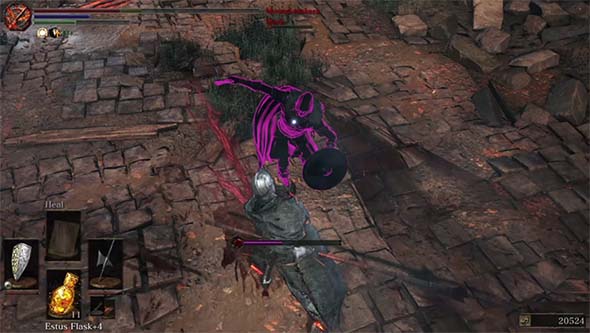
Without poise, heavy armor is worthless, and daggers are incredibly overpowered against slower combatants.
Without poise in this form, heavy armor simply isn't worth its weight encumbrance, especially since you can't even upgrade it to increase its damage resistance. This was a problem in Demon's Souls, which didn't have poise. Heavy armors generally didn't reduce damage enough to be worthwhile, they prevented the player from effectively rolling, and they were so heavy that they prevented the player from being able to pick up all the loot in a level because that game also had an item burden. Rolling was the end-all-be-all of defense in Demon's Souls, and that was one of the game's greatest weaknesses. It was easy to overlook because the developers didn't know better at the time. But they do know better now. Was poise exploitable in Dark Souls? Sure. It was really exploitable in Dark Souls II due to its connection to hyper armor and the inclusion of farmable healing items. But whatever FROM Soft did to it in DSIII seems like a severe overreaction.
Once I learned that poise wasn't working the way I expected it to, I gave up on trying to engage a lot of enemies with my slow halberd. Instead, I started fighting the knights in Lothric Castle and the Grand Archives with my flame-infused barbed straight sword - which I also spent a bunch of titanite to fully upgrade. This speedier weapon allowed me to attack these knights as fast (or faster) than they could attack me, giving me enough of an edge to reliably beat them. The ones with the tower shields and lances still gave me trouble, but the swordsmen fell swiftly to my +10 Barbed Flame Sword. Even Yahtzee noted in his Zero Punctuation review the starting long sword seemed better than any of the numerous boss weapons that he found. I imagine that this is because he also had trouble with the lack of poise, but didn't quite figure out that poise wasn't working.
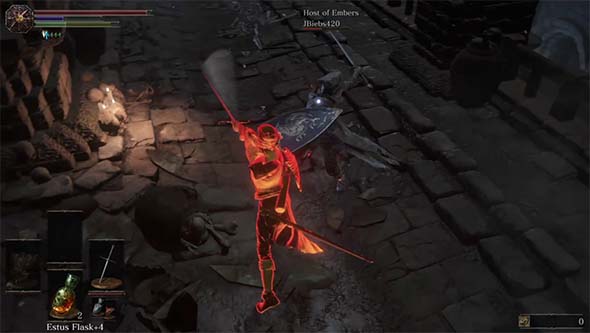
Lack of proper poise allows the estoc's reach and speed to make it a deadly PvP weapon.
So this leaves us with the question of "what, exactly, is poise intended to do?"...
[More]
9fc5b24e-c771-4f00-81da-f9aa41f3eb5f|1|5.0
Tags:Dark Souls, Dark Souls III, poise, PvP, co-op, covenant, phantom, summon, invader, invasion, friendly fire, NPC, Siegward, Siegward of Catarina, Patches, Unbreakable Patches, Anri, Anri of Astora, Yorshka, Blades of the Darkmoon, Darkmoon

PC elitists now have yet another bragging point. Considering that Bloodborne ran smoothly at 30 frames per second on the PS4 (from my experience), and that Dark Souls III was supposedly built upon that same engine, I expected that the PS4 version would perform on par with (or maybe even better than) the PC version. I was wrong. Both console versions of Dark Souls III are capped at 30 fps, but their actual performance doesn't even meet that standard. This is a big problem considering that the game plays almost as fast as Bloodborne. Dropping a few crucial frames of enemy attack wind-ups can mean the difference between a successful dodge or parry, or losing a third of your health to a single attack. Bloodborne had the load screen issue that was that game's near-debilitating "known shippable"; and now Dark Souls III has its console framerate as being the major launch issue that must be fixed. At least Bloodborne's problem didn't impact actual gameplay...
Table of Content
A challenge to Souls fans
This is probably the hardest game in the lineup. In fact, it may even be too hard in some ways. Enemies are very aggressive and relentless, they are very fast and swift at attacking, and they are very good at tracking your movement during an attack. I feel like the game is sadly front-loaded with excessive difficulty. Oh, don't get me wrong! It's hard throughout, and there's still some definite mid-and-late-game peaks of difficulty. But this game easily has the highest barrier to entry of any game in the lineup.
Dark Souls III is very hard and very much front-loaded with difficulty.
It's one thing to provide a challenge, but the early levels of this game maybe cross the line into outright cruelty. If I weren't already invested in the series, I might not have even made it past the Lothric knights in the High Wall. Yeah sure, Demon's Souls had the Red Eye Knights, and Dark Souls had the Black Knights, and Bloodborne had the warewolves; but in those cases, those difficult enemies were blocking optional paths and items. This is why I can kind of tolerate the mutating tentacle monster on the rooftop that hits very hard, has a ton of HP, obscures half the screen, and causes an annoying framerate drop. Yeah, it's located in a critical path of the level, but it can be easily avoided and is basically just guarding a crystal lizard. The difficult Lothric knights, on the other hand, are placed in critical bottlenecks that must be passed as part of the necessary path of progression through the level, and they will shred new players to pieces! Heck, even that fat, winged knight going around in circles in the courtyard is easier than the Lothric Knights.
And then you get to the Undead Settlement, which is a maze full of ambushes and difficult enemies. Those fat evangelists and the large cleaver undead hit hard and have deceptively long reach and multi-hit combos. This is at a time when your HP and stamina are so low that you can't reliably block their attacks. Their long reach and relentless aggression means you can't back away either. So you're stuck having to stick to close range and roll through their attacks - a maneuver that can result in a quick death if you make but a single slip-up. I had a lot of trouble handling these enemies (as I was still getting used to the new timings for dodging and parrying, and the stamina requirements for blocking), and so I imagine that many rookies will likely be completely overwhelmed.
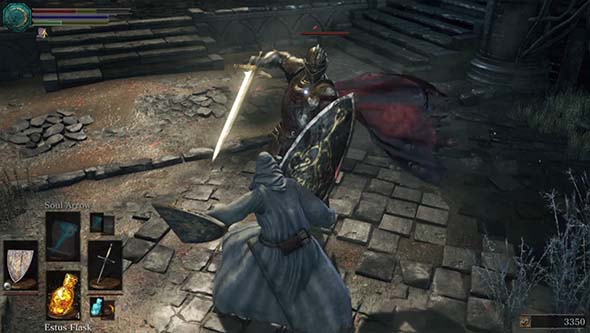
Dangerous enemies have narrow windows for parrying their attacks, making it hard to practice this technique.
There's a higher skill floor than in previous titles, and the game demands a further degree of mastery of rolling, stamina management, i-frames, and weapon movesets that previous games simply didn't require. Bloodborne also toes with this line, but Dark Souls III seems to go a bit further. The problem here is that enemies become far too fast and deadly far too early in the game, and the player character remains slow and relatively weak. What's worse is that the game breaks with the original's insistence on fair difficulty by apparently completely failing to enforce the rules regarding stamina for enemies! This was also a problem in Dark Souls II, but it didn't bother me quite as much because those enemies had slower attacks that were generally easier to dodge.
There's no gradual ramping up of challenge for the player to learn things like roll and parry timings, and there aren't any large, slow enemies to practice these techniques against. Bloodborne had very fast enemies to go with its very fast combat, but the character was also equally fast. Bloodborne also had the Brick Trolls, whose telegraphed attacks gave plenty of opportunity to practice parrying in the very first level while still making progress. Dark Souls III simply doesn't have this. There's the undead spearmen that are easy to parry, but they're so slow and defensive that you'll likely just get bored waiting for them to attack and miss your opportunity to parry. Sure you could go back to the tutorial level to practice parrying, but then you're not making any progress. There's also a lot more instances early of mobs, including the presence of difficult casters (or even bosses) being among those mobs. Fortunately, the boss is very slow and lumbering, and the casters have good audio cues for when they're casting that help to make these mobs less frustrating to deal with.
The big, armored elephant in the room
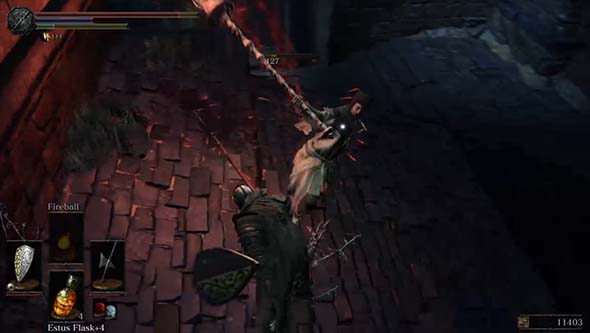
Poise has been disabled for players, which means enemies will always stagger you, but you might not stagger them.
Perhaps the biggest contributor to the game's difficulty early on is the completely baffling way in which poise and defense work - which is that they don't. In addition to not being able to upgrade armor to improve its defenses, the poise stat appears to have been completely disabled for all players in the game's code for ... some reason. Poise was one of the best additions from Dark Souls 1, and its apparent removal completely baffles me. Is it bugged and they're planning on fixing and enabling it later via a patch? Is it planned to be part of DLC? "Hey, want poise back? Pay $15 for this DLC!" The value still shows up in the UI, and there's still rings and weapons that exclusively improve poise, so it definitely seems like FROM intends for poise to be in the game. The enemies seem to still have poise, so this situation seems completely unfair. This might be part of the reason why the start of the game feels so difficult, since those damned speedy Lothric Knights can hit through your attacks, but you can't hit through theirs! [More]
fad05dd1-7cd5-454e-9102-9178f6fa617e|5|3.6
Tags:Dark Souls, Dark Souls III, From Software, Namco/Bandai, PlayStation 4, PSN, XBox One, XBox Live, PC, Steam, online, multiplayer, co-op, PvP, invasion, phantom, covenant, Lord of Cinder, Firelink Shrine, Demon's Souls, Nexus
|

| 12 | | | | | | | 60 | | 11 | | | | | | | 55 | | 10 | | | | | | | 50 | | 09 | | | | | | | 45 | | 08 | | | | | | | 40 | | 07 | | | | | | | 35 | | 06 | | | | | | | 30 | | 05 | | | | | | | 25 | | 04 | | | | | | | 20 | | 03 | | | | | | | 15 | | 02 | | | | | | | 10 | | 01 | | | | | | | 05 |
|